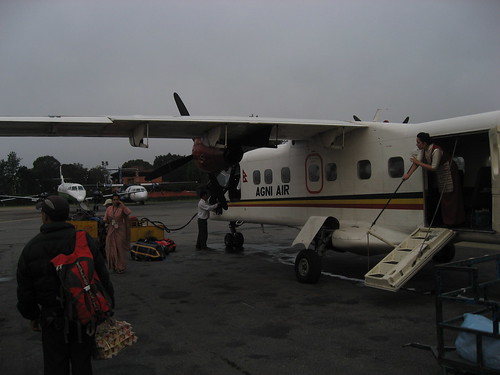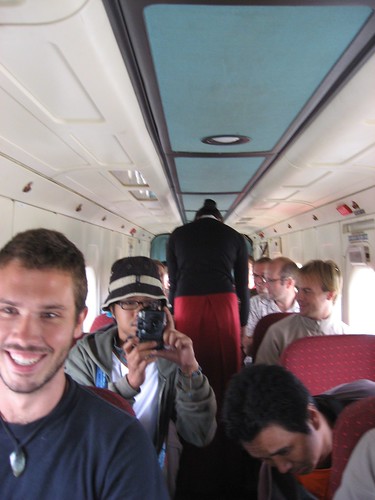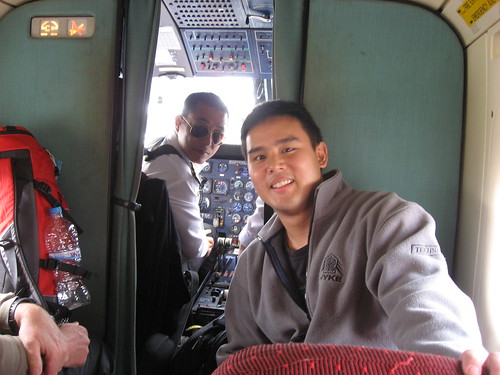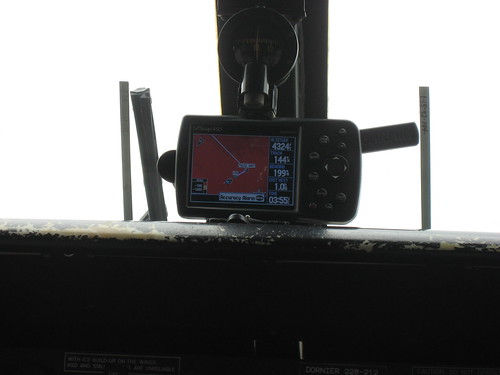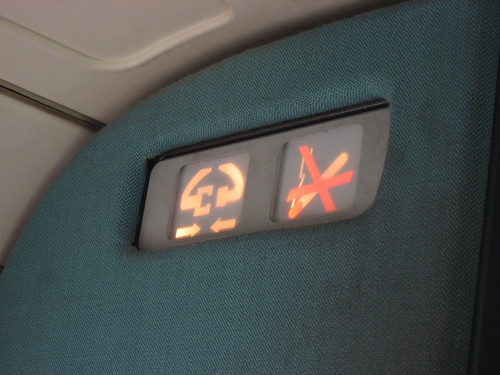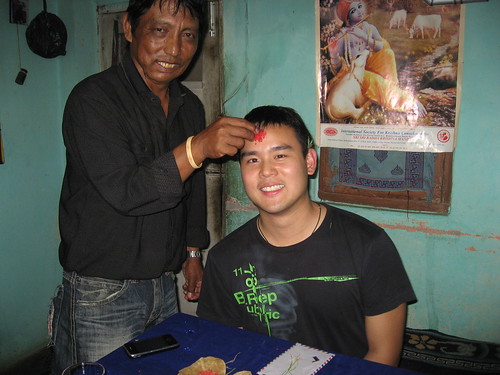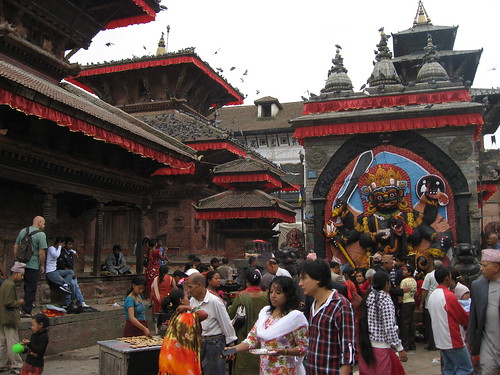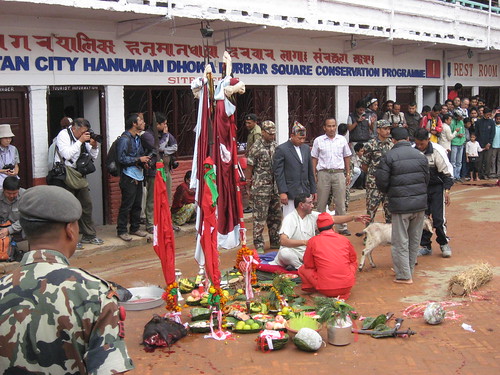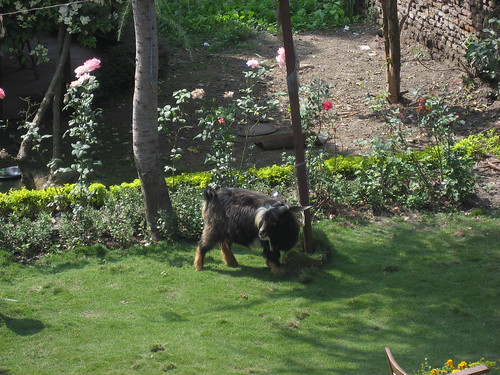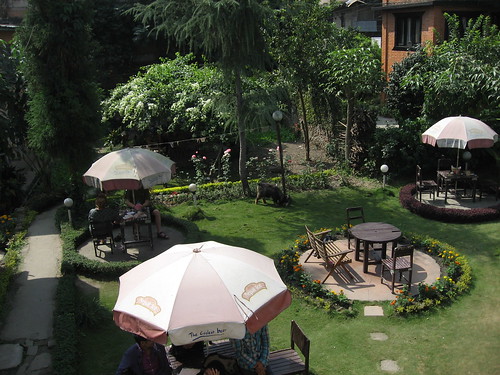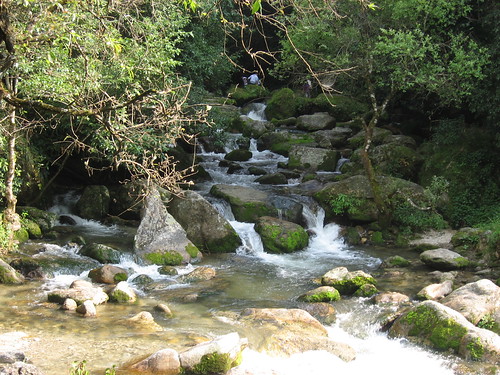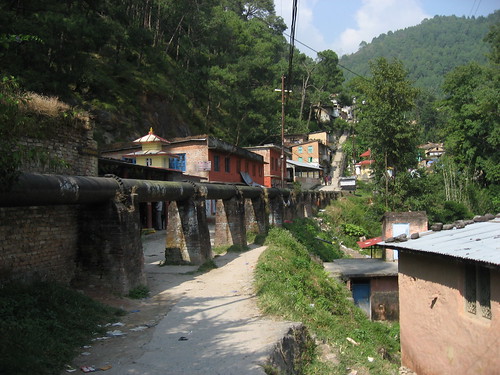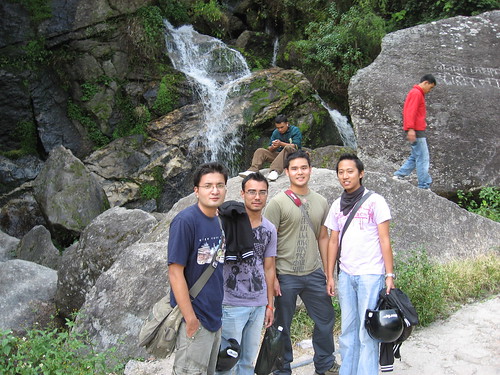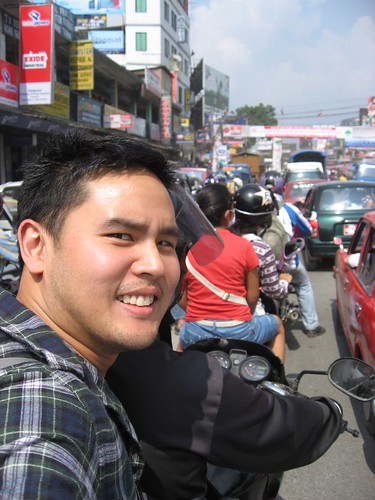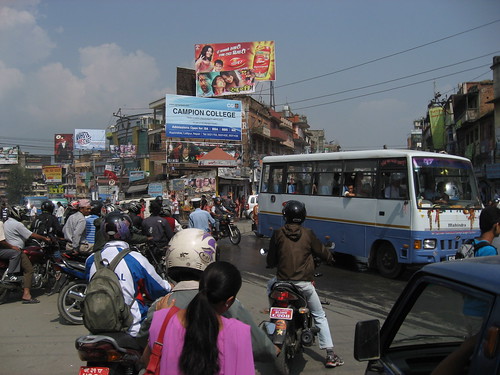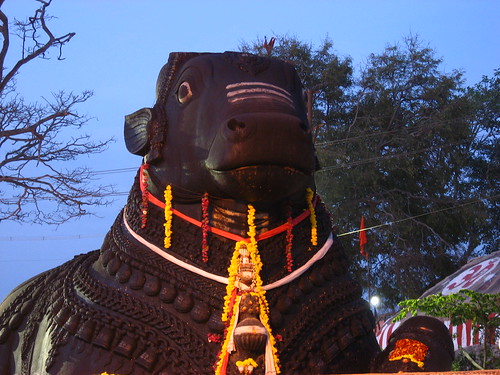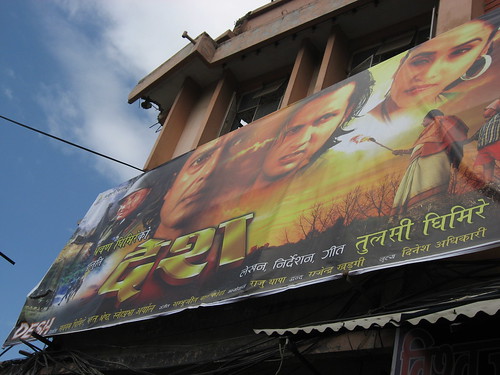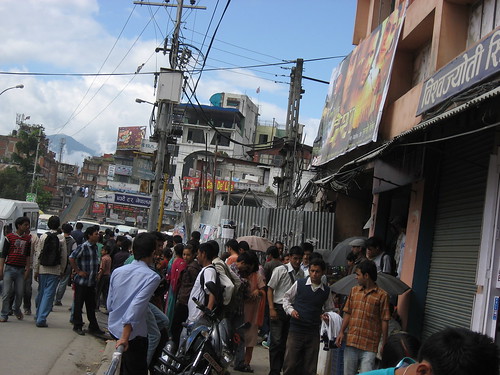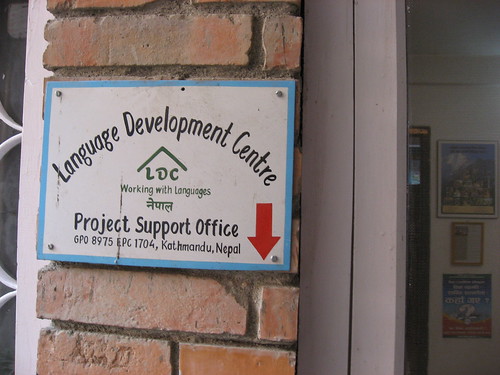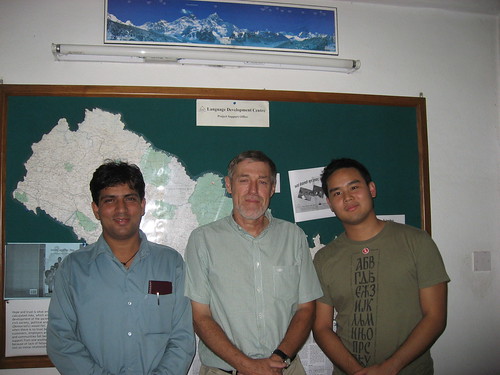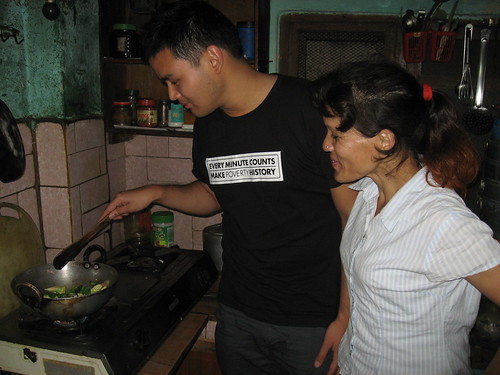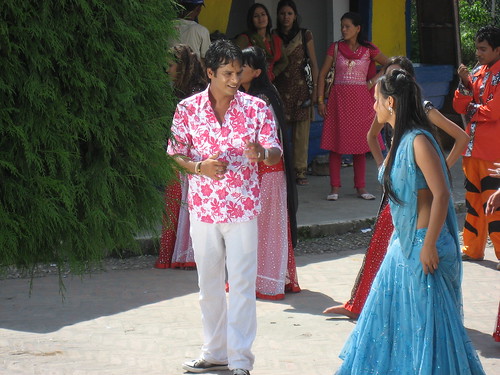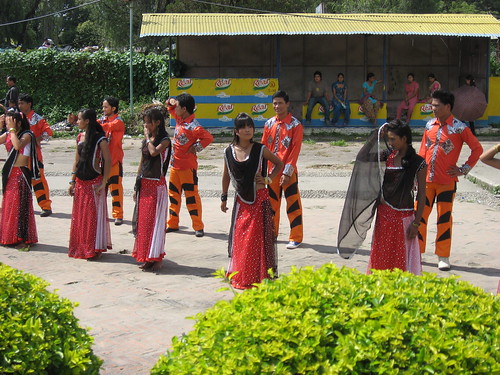For the past week I've been here in the stunningly beautiful Khumbu (the region just south of Mount Everest), visting my friend Sara who's been doing her PhD research in the village of Khumjung (famous for its Hilary School and yeti scalp). I spent five nights in Khumjung and am now back in Namche Bazaar for another four, before heading back down to Lukla with Sara on Friday. Sara's went off to the Gokyo Valley on Saturday, while I stayed on so I could go to Tengboche on Sunday for the second last day of the Mani Rimbu festival where the monks wear masks and perform dances all day (but more on this later).
One of the other reasons I'm up here is to help a professor back in Melbourne with some Sherpa data. The first task is to collect (and transcribe -ugh) a story about a Jackal and Crow that she'd first heard years ago when she was writing her thesis on Sherpa. I've collected 6 stories so far, and barely transcribed one, with the help of one of the girls at the guest house I stayed at in Khumjung. Given my limited Nepali and even more limited Sherpa, the work is pretty slow-going and I will probably have to find some Sherpa speakers in Kathmandu when I get back to do at least one more transcription.
The second task is to look at evidentials in Sherpa. Like Tibetan, which it is closely related to, Sherpa requires the speaker to state how one knows a certain fact. For instance, in saying 'He is Sherpa', there are potentially three forms of the verb 'is' that can be used: one when it is a personal knowledge that he is Sherpa, one when it is a well known fact that he is Sherpa, and one when you are inferring he is Sherpa. Note that in English, it is just as possible to make these three distinctions by adding the phrases, "I know...", "it's well-known fact that...", and "I think..." The difference is that in Sherpa you have to state how you know that fact.
These are three distinctions that are supposed to exist in Sherpa, as I have read in the small grammar section of the Sherpa-English dictionary. I don't dispute these distinctions, but anyone who has had to check these distinctions with native speakers of Tibetic languages can tell you what an absolute PAIN it is. It's never as simple as asking someone, "How do you say, 'He is Sherpa' in Sherpa?" Speakers invariably use the same evidential form in such translations -
yin - but when I offer
yinza and
yinno' as alternatives, they tell me that both are acceptable too. Of course, few people can tell me when each one is used, and it would take hours of ploughing through recorded conversations or texts to actually work out when each form occurs (unless you happen to be a linguistically aware native speaker).
Then there's the linguistic obsession with paradigms. Anyone who's had to learn verb conjugations in an Indo-European language will have experienced this, systematically going through verb forms like 'I am', 'You (singular) are', 'We are' etc, along with their question forms 'Am I?', 'Are you?', 'Are we?' etc.
The reality is that it is not always possible to get a full set of these forms. It is surprisingly difficult to get the form 'You are' in the affirmative, simply because it's rare to go up to someone and tell them who or what they are. It's far more common to have that as a question - 'Are you ...'. Conversely, it's nearly impossible to get the interrogative forms 'Am I?' and 'Are we?'. Speakers will tell me, 'No, no, that's not a question' and simply reject the fact that 'Am I?' or 'Are we?' can exist as questions. I suppose their reasoning is that you don't need to ask those questions to someone else when you're asking about something you're supposed to know about yourself.
Am I going slightly crazy? Yes, I suppose I am. Might go for a short trek tomorrow out of Namche to clear my head. It's one of the advantages of doing fieldwork in this part of the world. Photos will follow as soon as I get back to Kathmandu.
